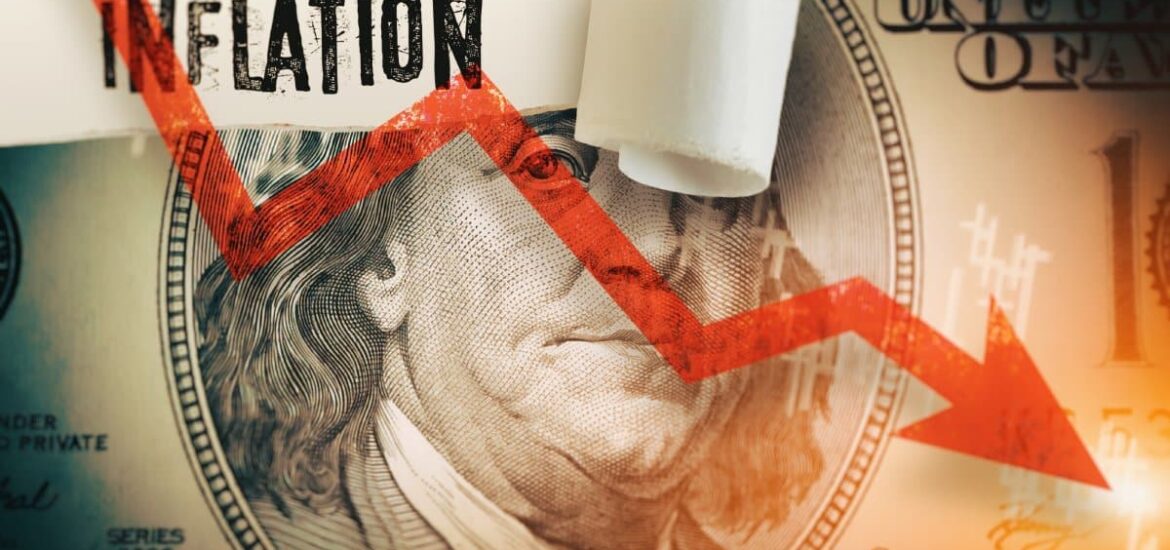In recent months, the United States has witnessed a significant easing of inflation, a positive turn for the economy. This change, coming faster than the experts predicted, brings a mix of relief and new questions about what lies ahead for the nation’s financial future.
Inflation’s Peak and Decline
In 2021 and 2022, inflation soared, impacting household budgets and political approval ratings. Surprisingly, late 2023 saw a rapid decline in inflation, confounding economists.
Disinflation, a slowdown in the rate of inflation, is what the US is currently experiencing. Although prices aren’t dropping, their increase has slowed compared to the previous year. However, costs remain high compared to pre-pandemic levels, affecting everyday living.
The Federal Reserve aims for a steady 2% annual inflation rate to maintain a sustainable economy. This target is in line with global central bank standards and is critical for long-term economic stability.
2023’s Disinflation Shock
The rapid disinflation in mid-2023 took economists by surprise. Predictions had failed to foresee the extent of the slowdown, with inflation rates dropping more quickly than expected.
Often discussed but rarely unpacked, inflation is the gradual increase in prices over time. It is a force that subtly reshapes purchasing power. This phenomenon touches every aspect of the economy, from the cost of groceries to the stability of the housing market.
Inflation often springs from rising consumer demand, creating a scenario where more money chases fewer goods. However, it’s not always about demand. External factors like limited oil production, global political unrest, or even a breakdown in supply chains can fan the flames of inflation, creating ripples that affect prices worldwide.
The Two Faces of Inflation
Rapid inflation, where prices skyrocket quickly, can create economic turmoil. Yet, moderate inflation can be a sign of a healthy economy, leading to increased wages and job growth. It’s the pace and context of inflation that determine its impact.
While it may seem an abstract concept, for low-income families, the effects of inflation are a daily reality. Inflation disproportionately affects lower-income households, as they spend a larger portion of their income on necessities like food, rent, and transportation.
Inflation and the Market
The stock market, a barometer of economic health, has a complex relationship with inflation. When inflation spikes, it often spells trouble for stocks, unsettling investors and leading to market volatility. While financial assets can struggle in times of high inflation, physical assets like real estate might retain or even increase their value, offering a hedge against inflation’s erosive effects.
Inflation doesn’t just impact what we pay at the checkout. Its ripples can be felt across various sectors, influencing everything from government policy to business decisions. Understanding the nuances of inflation is key to navigating its waves and preparing for its potential impact on different facets of the economy.
Inflation relief began with declining travel prices, particularly airfares, due to increased supply and lower fuel costs. Goods prices, including furniture and vehicles, also started to stabilize, contributing to the overall reduction in inflation.
The easing of supply chain disruptions played a significant role in reducing inflation. Normalizing shipping routes and increasing production capacity helped stabilize prices for various goods and services.
Although rental costs remain high, there’s potential for further inflation reduction as the housing market stabilizes. Private-sector data shows a slowdown in new rents, indicating possible future decreases in official inflation figures.
Predictions for 2024
Economists anticipate that consumer price inflation may fall closer to the Fed’s target by the end of 2024. There’s even a possibility of inflation dipping below 2%, which could indicate a significant economic shift.
Despite the positive trends, uncertainties remain. Fluctuating fuel prices and geopolitical issues could reverse the progress. Additionally, the possibility of underestimating the recent inflation slowdown exists, which could impact future economic policies.
Global events, like conflicts affecting key trade routes, pose a risk to the inflation outlook. These issues can disrupt supply chains and potentially lead to price increases in various sectors.
Year-End Data Revisions
Annual price data revisions and early-year price increases could alter the perception of inflation trends. These factors might influence policy decisions and economic forecasts.
The Federal Reserve’s response to these trends will be crucial. After significant rate hikes to control inflation, the possibility of lowering interest rates in 2024 exists, depending on how inflation evolves.
Overall, the trend toward lower inflation brings a sense of optimism. However, vigilance is necessary as global and domestic factors continue to influence the economic landscape. The Federal Reserve and economists will closely monitor these developments to guide future economic policies.
More From Frugal to Free
24 High-End Beauty Products That Aren’t Worth Splurging On
24 Retro Kitchen Gadgets Surprisingly Worth Big Money
The post Will Easing Inflation in America Continue? first appeared on From Frugal to Free.
Featured Image Credit: Shutterstock / Morrowind. The people shown in the images are for illustrative purposes only, not the actual people featured in the story.
